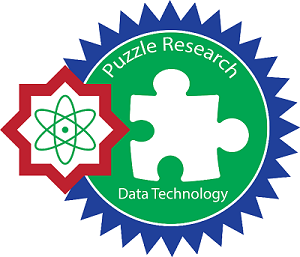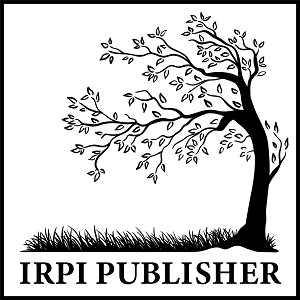ADDITIONAL MENU
Implementation of C4.5 Algorithm for Critical Land Prediction in Agricultural Cultivation Areas in Pemali Jratun Watershed
Abstract
Watershed is a complex system that is built on physical systems, biological systems and human systems that are related to each other. Each component has a distinctive nature and its existence is related to other components so as to form a unified ecosystem. Land use that does not pay attention to the conservation requirements of land and water causes land degradation which ultimately results in critical land. The impact of critical land is not only the withdrawal of soil properties, but also results in a decrease in production functions. Prediction of the critical level of land is needed to reduce the level of damage to the watershed, so that it can be used for policy making by the relevant agencies. In this research C4.5 algorithm will be applied to predictions of critical land in agricultural cultivation areas using critical land parameters. Based on the results of the research on critical land classification of agricultural cultivation areas in the jratun pemali watershed it can be concluded that the C.45 algorithm can be implemented to predict critical land in agricultural cultivation areas with an accuracy rate of 92.47%.
Full Text:
PDFReferences
A. Susetyaningsih, “Pengaturan Penggunaan Lahan di Daerah Hulu DAS Cimanuk Sebagai Upaya Optimalisasi Pemanfaatan Sumberdaya Air,” Kontruksi, vol. 10, no. 01, pp. 1–8, 2012.
R. H. Anasiru, “Analisis Spasial Dalam Klasifikasi Lahan Kritis Di Kawasan Sub-DAS Langge Gorontalo,” Inform. Pertan., vol. 25, no. 2, pp. 261–272, 2016.
A. Huzaini and S. Rahayu, “Tingkat Kekritisan Lahan di Kecamatan Gunngpati Kota Semarang,” J. Tek. PWK, vol. 2, no. 2, pp. 270–280, 2013.
M. Rosyada, Y. Prasetyo, and Hani’ah, “Penentuan Tingkat Lahan Kritis Menggunakan Pembobotan dan Algoritma NDVI,” J. Geod. Undip, vol. 4, no. 1, pp. 85–94, 2015.
H. Hendro, Z. Nadhi, S. Budiastuti, and D. Purnomo, “Pemetaan Lahan Kritis di Kawasan Muria untuk Meningkatkan Daya Dukung Lingkungan yang Berbasis pada Sistem Informasi Geografis,” J. Ilmu Pertan., vol. 17, no. 1, pp. 46–51, 2014.
M. K. Nasution, “Tingkat Kekritisan dan Rehabilitasi Lahan di DAS Krueng Aceh,” Institut Pertanian Bogor, 2018.
I. M. Parsa, U. S. Wiradisastra, and H. Pawitan, “Identifikasi dan Pemetaan Lahan Kritis Menggunakan Teknik Pengindraan Jauh dan Sistem Informasi Geografi,” Manaj. Hutan Trop., vol. IX, no. 2, pp. 63–77, 2003.
N. Khotimah and D. Istiawan, “Perbandingan Algoritma C4.5 , Naïve Bayes dan K-Nearest Neighbour untuk Prediksi Lahan Kritis di Kabupaten Pemalang,” Univ. Res. Colloqium, pp. 41–50, 2018.
D. Lu and Q. Weng, “A survey of image classification methods and techniques for improving classification performance,” Int. J. Remote Sens., vol. 28, no. 5, pp. 823–870, 2007.
J. R. Otukei and T. Blaschke, “Land cover change assessment using decision trees, support vector machines and maximum likelihood classification algorithms,” Int. J. Appl. Earth Obs. Geoinf., vol. 125, pp. 527–531, 2010.
J. Han, M. Kamber, and J. Pei, Data Mining: Concepts and Techniques, Thrid. Wyman Street, Waltham: Morgan Kaufmann, 2012.
D. Istiawan, “Implementasi Algoritma Naive Bayes untuk Klasifikasi Lahan Kritis pada Kawasan Budidaya Pertanian,” Univ. Res. Colloqium, vol. 9, pp. 369–372, 2019.
C. J. Mantas and J. Abellán, “Credal-C4.5: Decision tree based on imprecise probabilities to classify noisy data,” Expert Syst. Appl., vol. 41, no. 10, pp. 4625–4637, 2014.
F. Gorunescu, Data Mining Concepts, Model and Techniques, 12th ed. Berlin, Heidelberg: Springer Berlin Heidelberg, 2011.
B. Hssina, A. Merbouha, H. Ezzikouri, and M. Erritali, “A Comparative Study of Decision Tree ID3 and C4.5,” Int. J. Adv. Comput. Sci. Appl., vol. 4, no. 2, 2014.
M. J. Zaki and W. J. Meira, Data Mining and Analysis: Fundamental Concepts and Algorithms. 2014.
D. M. Farid, L. Zhang, C. M. Rahman, M. A. Hossain, and R. Strachan, “Hybrid decision tree and naïve Bayes classifiers for multi-class classification tasks,” Expert Syst. Appl., vol. 41, no. 4, pp. 1937–1946, 2014.
J. R. Quinlan, “C4.5: Programs for Machine Learning.pdf,” Morgan Kaufmann, vol. 5, no. 3. The Morgan Kaufman, United States of America, p. 302, 1993.
I. Rahmayuni, “Perbandingan Performansi Algoritma C4.5 dan CART Dalam Klasifikasi Data Nilai Mahasiswa Prodi Teknik Komputer Politeknik Negeri Padang,” Teknoif, vol. 2, no. 1, pp. 40–46, 2014.
E. Prastyo, Data Mining Mengolah data Menjadi Informasi Menggunakan Matlab. Yogyakarta: ANDI, 2014.
C. A. Floudas and P. M. Pardalos, Encyclopedia of Optimization. United States of America: Springer US, 2009.
L. Torgo, Data Mining with R: Learning with Case Studies, vol. 20105341. New York: Chapman & Hall, 2010.
DOI: http://dx.doi.org/10.24014/ijaidm.v2i2.7569
Refbacks
- There are currently no refbacks.
Office and Secretariat:
Big Data Research Centre
Puzzle Research Data Technology (Predatech)
Laboratory Building 1st Floor of Faculty of Science and Technology
UIN Sultan Syarif Kasim Riau
Jl. HR. Soebrantas KM. 18.5 No. 155 Pekanbaru Riau – 28293
Website: http://predatech.uin-suska.ac.id/ijaidm
Email: ijaidm@uin-suska.ac.id
e-Journal: http://ejournal.uin-suska.ac.id/index.php/ijaidm
Phone: 085275359942
Journal Indexing:
Google Scholar | ROAD | PKP Index | BASE | ESJI | General Impact Factor | Garuda | Moraref | One Search | Cite Factor | Crossref | WorldCat | Neliti | SINTA | Dimensions | ICI Index Copernicus
IJAIDM Stats










